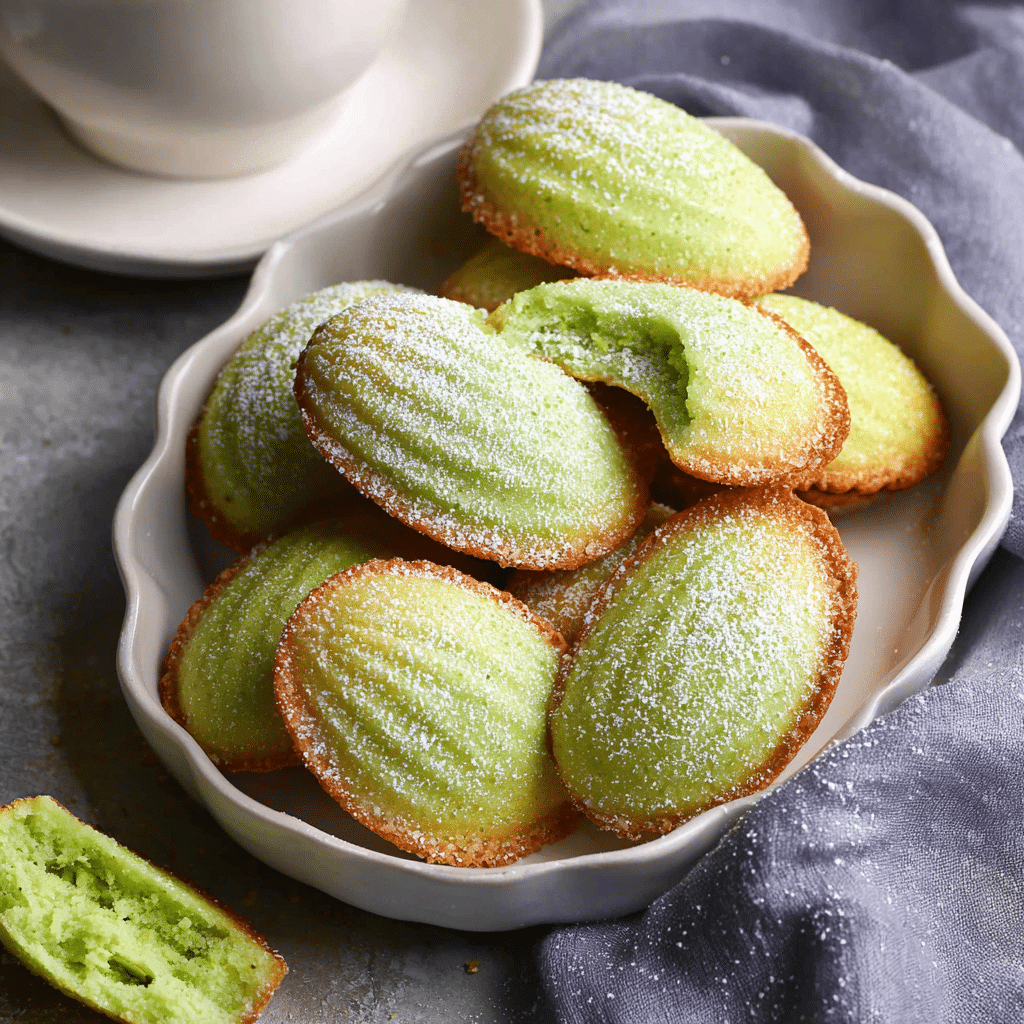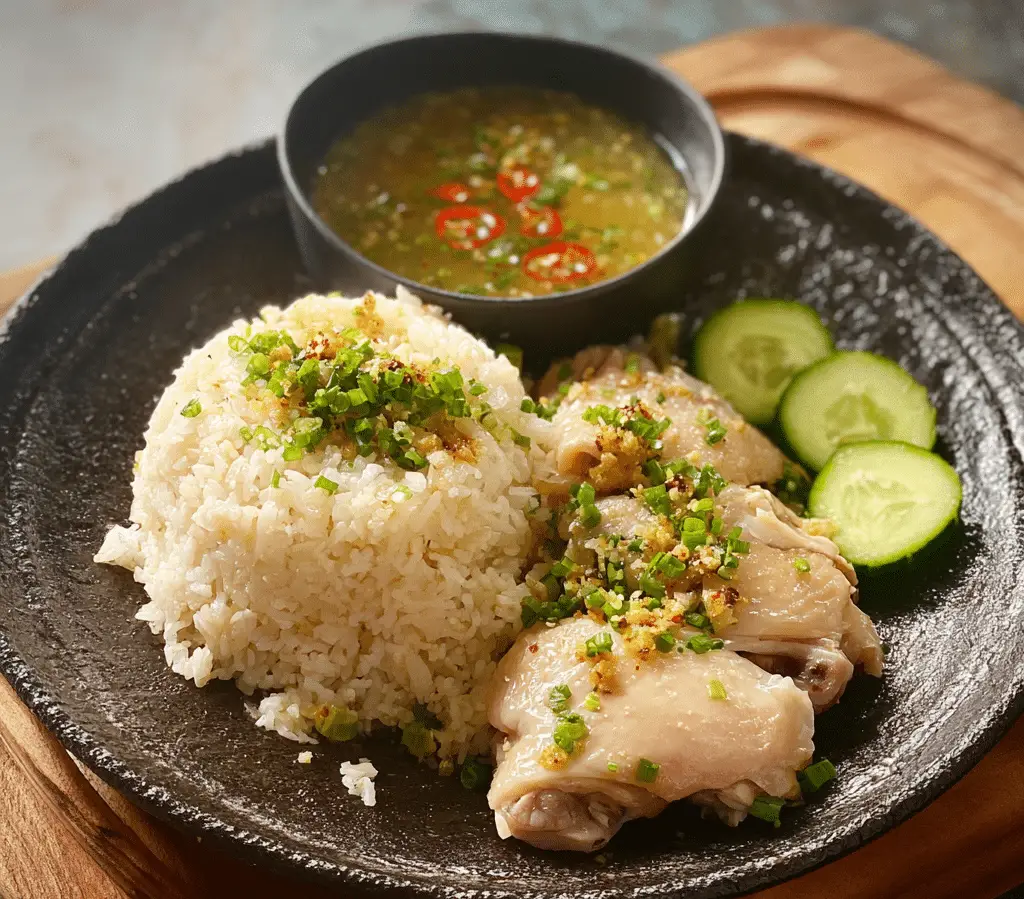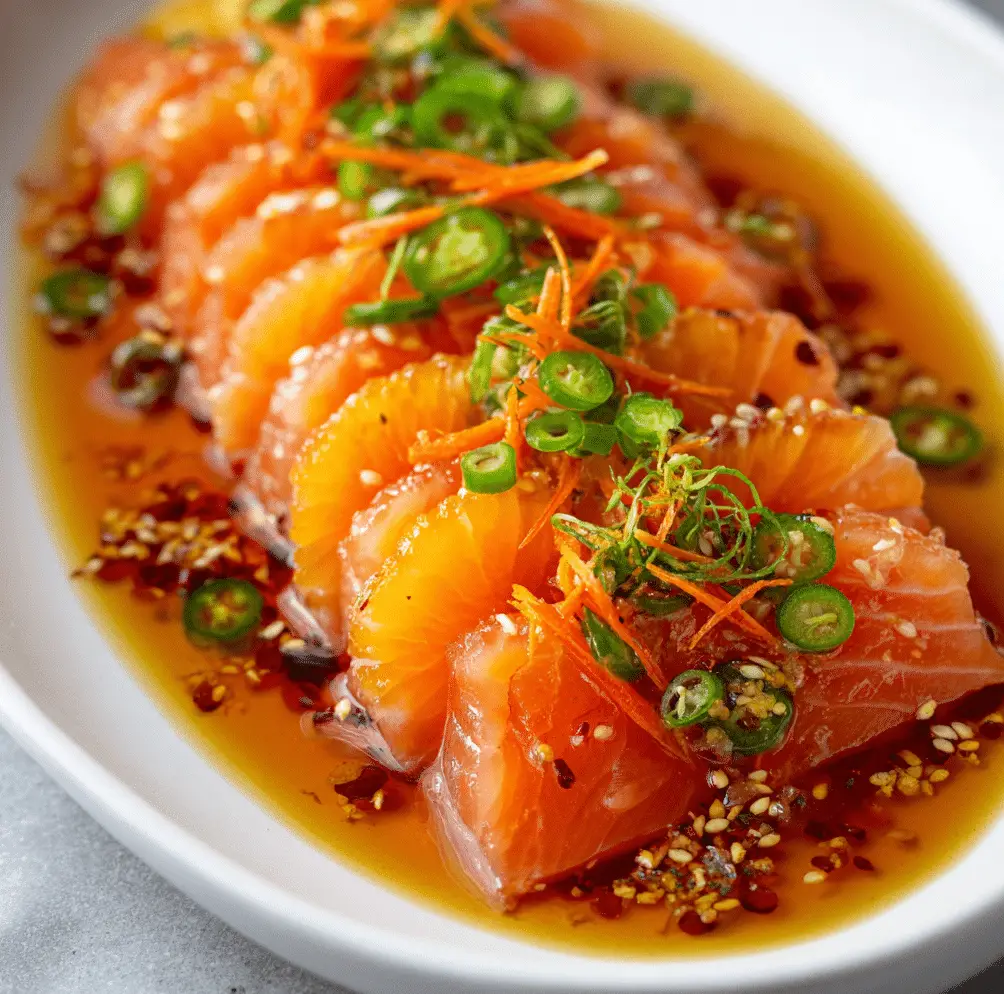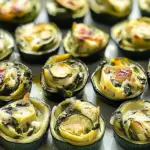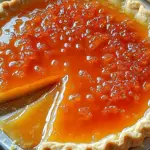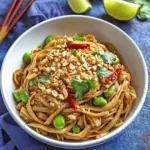The charming Pandan Coconut Madeleines bring together the essence of Southeast Asian flavors with the elegance of French baking. The pandan’s herbal vanilla-like aroma pairs beautifully with the nutty sweetness of desiccated coconut, resulting in soft, moist madeleines with a golden crisp edge.
Perfect for afternoon tea, festive gatherings, or as a sweet gift, these little shell-shaped cakes offer a unique fusion of tradition and indulgence. The light green hue from the pandan adds visual delight, while the flavor delivers comfort and nostalgia in every bite.
Full Recipe
Ingredients:
-
1/2 cup (113 g) unsalted butter, melted and cooled
-
2 large eggs, room temperature
-
1/2 cup (100 g) granulated sugar
-
1 tbsp honey
-
1/4 tsp salt
-
2/3 cup (85 g) all-purpose flour
-
1/2 tsp baking powder
-
2 tbsp pandan juice or 1/2 tsp pandan extract
-
1/4 cup (20 g) desiccated coconut
-
Powdered sugar (optional, for dusting)
Directions:
-
In a large mixing bowl, whisk together the eggs, sugar, and honey until pale and slightly thickened.
-
Stir in the pandan juice or extract until well combined.
-
Sift in the flour, baking powder, and salt. Mix until just incorporated.
-
Gently fold in the melted butter until smooth, then add the desiccated coconut.
-
Cover the batter and refrigerate for at least 1 hour or overnight for best results.
-
Preheat oven to 375°F (190°C). Grease and lightly flour a madeleine pan.
-
Fill each mold about 3/4 full with the chilled batter.
-
Bake for 10-12 minutes or until the edges are golden brown and the centers have domed.
-
Allow to cool slightly before removing from the pan. Dust with powdered sugar if desired.
Prep Time: 10 minutes (plus chilling time) | Cooking Time: 12 minutes | Total Time: 1 hour 22 minutes (with chilling)
Kcal: 130 kcal | Servings: 12 madeleines
The Story Behind Pandan Coconut Madeleines
Pandan Coconut Madeleines are a delightful fusion of Southeast Asian and French culinary traditions. This recipe pays homage to the buttery richness and iconic shell shape of traditional French madeleines, while infusing them with the earthy, floral essence of pandan and the warm, nutty flavor of coconut. Pandan, often referred to as “Asian vanilla,” is widely used in Southeast Asian desserts for its vibrant green color and uniquely fragrant aroma. When combined with desiccated coconut, it evokes memories of tropical treats found across Indonesia, Malaysia, Thailand, and the Philippines.
This recipe was created for home bakers who enjoy experimenting with flavor combinations that transcend cultural boundaries. The end result is a light, fluffy sponge cake with a crisp edge that melts in your mouth, bursting with subtle sweetness and a complex aromatic profile. It’s not just a dessert—it’s a cultural experience in every bite.
Cultural Significance of Pandan
Pandan (Pandanus amaryllifolius) is a leafy plant popular in Southeast Asian cuisines, especially in sweets and baked goods. Known for its grassy, vanilla-like flavor and its natural ability to tint food a pleasant green hue, pandan has been used for centuries. In many cultures, pandan is not only a flavoring but also a nostalgic symbol of home cooking and traditional desserts.
In Indonesia and Malaysia, pandan is often paired with coconut milk in popular desserts like kuih, seri muka, and kue dadar gulung. The combination of pandan and coconut brings a sense of familiarity and warmth to any dish, and when introduced to a Western format like the French madeleine, it creates a bridge between two culinary worlds.
The Beauty of Fusion Baking
Fusion baking has become a growing trend in recent years, as more bakers and food enthusiasts look to create innovative recipes that reflect multicultural influences. Pandan Coconut Madeleines exemplify how two seemingly different culinary heritages can harmonize beautifully.
French madeleines are typically flavored with vanilla or lemon and served during tea time. By substituting the traditional flavors with pandan and coconut, the recipe becomes something entirely new yet deeply comforting. This kind of cross-cultural creativity allows people to explore global flavors while still appreciating classic techniques and textures.
Texture and Flavor Profile
The texture of Pandan Coconut Madeleines is what truly makes them special. A good madeleine should have a slight crispness on the outside, especially around the scalloped edges, while maintaining a soft, sponge-like interior. The inclusion of honey in the batter adds moisture and a mild floral sweetness, complementing the pandan flavor.
Desiccated coconut not only enhances the texture with a subtle chew but also amplifies the tropical flavor. When baked, the coconut slightly toasts in the batter, adding depth and warmth to each bite. The aroma of pandan fills the kitchen during baking, creating an irresistible sensory experience even before you take a bite.
Tips for Best Results
To achieve the perfect madeleine rise and signature hump, chilling the batter is essential. This resting period allows the gluten to relax and gives the batter a thicker consistency, which helps create steam and lift during baking. Ideally, chill the batter for at least an hour, though overnight chilling yields even better results.
Properly greasing and flouring your madeleine pan is another critical step. Madeleines are delicate and can easily stick to the mold if the pan is not well-prepared. For an extra crisp edge, consider brushing the pan with melted butter and then dusting with flour just before filling.
Avoid overmixing the batter, as this can result in dense or rubbery cakes. Fold ingredients gently and only until combined. Lastly, always bake in a well-preheated oven—this helps the outer shell crisp up quickly while the inside remains soft and tender.
Occasions to Serve Pandan Coconut Madeleines
These madeleines are perfect for a variety of occasions. Serve them at brunch gatherings, afternoon tea parties, or during holidays where a tropical twist is welcome. They also make beautiful edible gifts. Their unique green color adds a festive touch to dessert platters, and their small size makes them ideal finger food.
For more cultural occasions, these treats can serve as a modern nod to traditional Southeast Asian sweets. For example, during Hari Raya, Lunar New Year, or even during family gatherings where heritage desserts are often featured, Pandan Coconut Madeleines can introduce something new without losing the essence of tradition.
Customization and Variations
One of the great things about this recipe is how easy it is to customize. You can experiment with other tropical flavors such as mango, lychee, or even passion fruit by replacing or combining them with pandan. Adding a drizzle of white chocolate or a coconut glaze on top can elevate the visual appeal and flavor complexity.
For a richer texture, some bakers substitute a portion of the all-purpose flour with almond flour. This adds a subtle nutty undertone and a more tender crumb. You can also fold in a few chocolate chips or roasted coconut flakes for extra indulgence.
Those avoiding dairy can use plant-based butter and ensure their sugar and flour are vegan-friendly. The eggs, however, are crucial for structure, so egg replacements might alter the texture.
Storing and Serving Suggestions
Pandan Coconut Madeleines are best enjoyed fresh, ideally within a day of baking when their edges are still slightly crisp. If you have leftovers, store them in an airtight container at room temperature for up to three days. You can reheat them for a few seconds in the microwave to bring back a bit of softness.
Dusting them with powdered sugar right before serving adds a beautiful contrast to the green color and a touch of extra sweetness. Pair these madeleines with jasmine tea, iced matcha, or even a light coconut milk latte for a harmonious flavor pairing.
Why You’ll Love This Recipe
This recipe is perfect for anyone who loves combining flavor exploration with traditional baking methods. It’s a simple yet elegant dessert that doesn’t require complex techniques or hard-to-find ingredients, yet the end result feels luxurious and special. The balance of flavors, the captivating aroma of pandan, and the familiar comfort of coconut make this recipe stand out.
It’s also an excellent conversation starter—many people may not have tasted pandan before, and this recipe offers a friendly introduction to a beloved Southeast Asian ingredient. Whether you’re sharing these at a family gathering or serving them at a sophisticated event, Pandan Coconut Madeleines are bound to leave an impression.
Conclusion
Pandan Coconut Madeleines are more than just a pretty treat—they are a delicious celebration of fusion cuisine that brings together the rich culinary legacies of Southeast Asia and France. With their soft sponge interior, crisp golden edges, and enchanting pandan-coconut aroma, these madeleines will quickly become a favorite in your baking repertoire.
They’re easy enough for beginner bakers to attempt, yet refined enough to impress even the most discerning dessert lovers. Whether you’re baking for yourself, for guests, or for a special celebration, these madeleines offer a unique, flavorful twist on a timeless classic.
By making these at home, you’re not only enjoying a delicious dessert but also participating in a cultural exchange through food. So go ahead—preheat your oven, mix up a batch, and let the intoxicating aroma of pandan and coconut fill your kitchen with the promise of something extraordinary.

